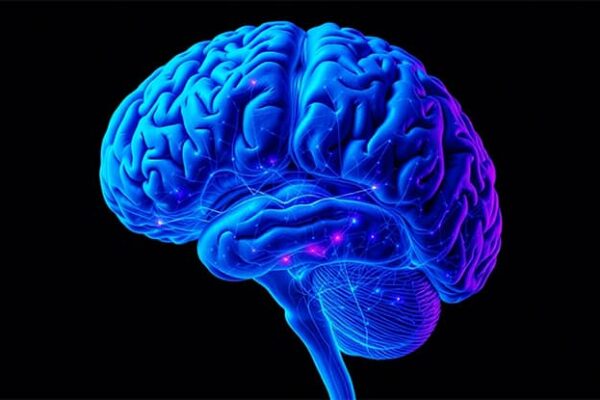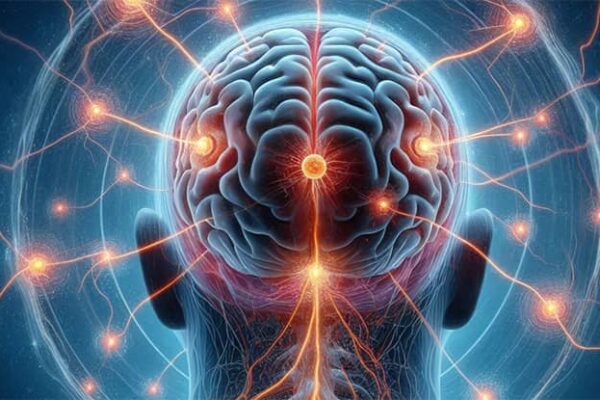Anhedonia is a condition where a person loses the ability to experience pleasure from activities or interests that previously brought them joy. This can affect various aspects of life, including interest in social interactions, hobbies, food, sex, and other activities. Anhedonia is often a symptom of various mental disorders, such as clinical depression, schizophrenia, bipolar disorder, and post-traumatic stress disorder (PTSD).
In the context of mental health, anhedonia plays a significant role, as the inability to experience pleasure directly affects a person’s quality of life, daily motivation, and interpersonal relationships. Prolonged anhedonia can lead to a decrease in overall activity levels, weakened social connections, and an increased risk of developing or worsening mental disorders.
Understanding and timely treatment of anhedonia are important to provide effective mental health support and prevent further deterioration of the condition. Treatment may include both medication and psychotherapy approaches aimed at restoring the ability to experience pleasure in life and improving overall life satisfaction.

Anhedonia: The History and Evolution of the Concept
The term “anhedonia” comes from the Greek words “ἀν-” (an-), meaning “without,” and “ἡδονή” (hēdonē), meaning “pleasure.” Thus, anhedonia literally translates to “without pleasure.” The term was introduced into scientific discourse in 1896 by French psychologist Théodule Ribot, who used it to describe a reduced ability to experience pleasure, particularly noticeable in people with certain mental disorders.
Since then, the understanding of anhedonia has evolved significantly, and today it is recognized as an important symptom in the diagnosis and study of various mental disorders. Specifically, anhedonia is considered a key symptom of major depressive disorder, schizophrenia, bipolar disorder, and other conditions associated with mood and perception disturbances.
In psychiatry and clinical psychology, anhedonia is studied as a significant factor affecting the prognosis and choice of treatment methods for mental disorders. Research in these areas focuses on understanding the mechanisms underlying anhedonia, including neurobiological, cognitive, and social aspects. Special attention is given to the relationship between anhedonia and dysfunction in the brain’s reward system, which helps develop targeted treatments aimed at improving patients’ quality of life.
With the advancement of neuroscience and increasing interest in the study of human behavior and emotions, anhedonia has become the subject of numerous scientific studies that have expanded our understanding of this phenomenon. This, in turn, has contributed to the development of new treatment approaches and innovative therapeutic strategies for combating anhedonia and related mental disorders.
A Review of Research and Key Findings on Anhedonia
Research on anhedonia spans various aspects, from neurobiological mechanisms to clinical approaches to treatment. Below is a brief overview of key findings related to anhedonia:
- Neurobiological foundations: Studies have shown that anhedonia is associated with dysfunction in the brain’s reward system, including areas such as the ventral striatum, prefrontal cortex, and amygdala. Changes in the dopaminergic system, which regulates pleasure anticipation and motivation, play a particularly important role.
- Genetic factors: Some genetic studies indicate a link between anhedonia and certain genetic markers, which may contribute to the development of personalized treatments for mental disorders.
- Impact on clinical disorders: Anhedonia is recognized as a key symptom of many mental illnesses, including major depressive disorder, schizophrenia, and bipolar disorder. It can serve as a predictor of disease course and response to treatment.
- Treatment and recovery: Clinical studies in pharmacotherapy and psychotherapy show that a comprehensive approach to treatment can improve anhedonia symptoms. Cognitive-behavioral therapy and medications targeting the brain’s reward system have been found effective.
- Role of social and behavioral factors: Research emphasizes the importance of social support and participation in social activities in reducing anhedonia symptoms. Developing social skills and improving the quality of interpersonal relationships can also contribute to recovery.
- Innovative approaches: Neuromodulation, including transcranial magnetic stimulation (TMS) and deep brain stimulation, is being studied as a potential treatment for anhedonia in patients unresponsive to traditional treatments.
These findings highlight the multifaceted nature of anhedonia and the need for an integrative approach to its study and treatment. Ongoing research in this area promises to expand our knowledge and improve strategies for helping people suffering from this condition.

Causes of Anhedonia
Anhedonia, a condition where a person loses the ability to experience pleasure from activities or interests that once brought them joy, is a complex and multifaceted issue in mental health. This symptom can manifest in various contexts and is a key feature of several psychiatric disorders. Understanding the causes of anhedonia requires a deep exploration of both biological and psychosocial factors influencing a person’s emotional well-being.
In recent years, significant progress has been made in the fields of neurology and psychiatry in attempting to uncover the mechanisms underlying anhedonia. Research indicates that changes in certain brain structures and neurotransmitter systems may play a crucial role in the development of this condition. Additionally, the psychological and social aspects of a person’s life also hold great importance, underscoring the complexity and multi-dimensional nature of anhedonia.
Biological Factors
Biological factors underlying anhedonia represent a complex interplay between genetic predispositions, neurochemical changes, and structural features of the brain. These aspects together form the fundamental understanding of how and why anhedonia manifests in certain individuals.
- Genetic predisposition: Studies suggest that genetic factors may play a role in the development of anhedonia. Certain genetic variations are associated with an increased risk of depressive disorders and a reduced ability to experience pleasure. This suggests that some individuals may have an innate predisposition to anhedonia, which is activated by external factors.
- Neurochemical changes: Central to mood regulation and the ability to experience pleasure are neurotransmitters such as dopamine, serotonin, and norepinephrine. Anhedonia is often linked to an imbalance in these neurochemical systems, especially a deficiency in the dopaminergic system, which is responsible for feelings of pleasure and reward. Changes in the levels of these neurotransmitters can reduce sensitivity to reward and pleasure.
- Structural and functional changes in the brain: Modern research using neuroimaging technologies such as MRI has shown that people with anhedonia may have structural and functional changes in certain brain regions. In particular, changes in the limbic system, prefrontal cortex, and striatum, which are involved in reward and motivation, may contribute to the development of anhedonia.
Understanding the biological factors underlying anhedonia opens the door to developing new treatments aimed at correcting these neurochemical and structural changes. This can include both pharmacological interventions and neuromodulation techniques aimed at restoring normal brain function and improving the ability to experience pleasure.
Psychological Factors
Psychological factors contributing to the development of anhedonia are broad and diverse. They include the following aspects:
- Chronic stress and overstrain: Prolonged exposure to stressful situations and the absence of adequate coping mechanisms can lead to a reduced ability to experience pleasure and joy from activities that previously evoked positive emotions.
- Traumatic events: Experiencing traumatic events, such as the death of a loved one, violence, serious accidents, or illnesses, can trigger the development of anhedonia as part of post-traumatic stress disorder (PTSD) or depression.
- Low self-esteem and self-criticism: Constant self-criticism and dissatisfaction with oneself, along with low self-esteem, can lead to a loss of interest in life’s joys and pleasures.
- Isolation and loneliness: The absence of close social ties and a feeling of isolation can contribute to the development of anhedonia, as social interactions are an important source of emotional satisfaction and pleasure.
- Cognitive distortions: A pessimistic worldview, negative beliefs about oneself and the future, and a tendency to catastrophize can reduce the ability to derive pleasure from life and lead to anhedonia.
- Feelings of helplessness and hopelessness: The sense of losing control over situations and a lack of belief in change can contribute to the loss of interest and pleasure in daily activities.
- Emotional exhaustion: Prolonged periods of emotional tension without opportunities for recovery often lead to the depletion of emotional resources and the development of anhedonia.
These factors may interact with each other, exacerbating the negative impact on mental health and a person’s ability to experience pleasure.
Socio-Economic Factors
Socio-economic factors also play a significant role in the development of anhedonia, influencing a person’s ability to experience pleasure and joy in life. Here are some of them:
- Low socio-economic status: Poverty and financial instability often lead to chronic stress, limited access to healthy food, healthcare, education, and leisure, which collectively can contribute to the development of anhedonia.
- Unemployment: The loss of a job and prolonged job searching can cause feelings of helplessness, low self-esteem, and social isolation, increasing the risk of developing anhedonia.
- Social isolation and loneliness: A lack of strong social ties and support can exacerbate feelings of isolation and loneliness, contributing to the development of anhedonia.
- Educational barriers: Limited access to quality education can restrict professional and personal prospects, reducing life satisfaction and contributing to anhedonia.
- Housing conditions: Living in unfavorable conditions, such as overcrowded or neglected areas, can increase stress and reduce overall quality of life, contributing to the development of anhedonia.
- Discrimination and social inequality: Facing discrimination and inequality due to race, gender, sexual orientation, or other factors can lead to feelings of rejection and inferiority, increasing the risk of anhedonia.
- Limited access to cultural and leisure activities: The inability to participate in cultural, educational, or recreational activities due to financial or geographical limitations can reduce the ability to experience pleasure and joy.
- Chronic stress from socioeconomic uncertainty. Constantly struggling with financial difficulties, uncertainty, and social pressure can lead to psychological exhaustion and anhedonia.

Symptoms and Diagnosis of Anhedonia
Anhedonia steals the colors of life, leaving it in the monochrome of feelings and emotions. It subtly but relentlessly diminishes a person’s ability to find pleasure in activities that once brought joy and enthusiasm. This condition manifests when favorite music no longer excites, meetings with friends bring no satisfaction, and beloved hobbies turn into indifferent tasks. Distinguishing the fine line between temporary apathy and the serious condition of anhedonia can be difficult, as its symptoms are often masked by everyday fatigue or temporary malaise.
Recognizing anhedonia requires a deep understanding of its manifestations and careful observation of changes in emotional responsiveness. It is the art of diagnosis, where every symptom, like a thread, leads to an understanding of deeper issues concerning emotional well-being. It’s essential to realize that behind each symptom lies a unique internal world of a person, their experiences, and their struggle to return to emotional harmony.
How to Recognize Anhedonia: Main Symptoms and Signs
Recognizing anhedonia requires attention to changes in emotional responses and behavior. The main symptoms and signs of anhedonia include:
- Loss of interest in activities that previously brought pleasure. The person stops enjoying hobbies, interests, and social activities that used to bring them joy.
- Indifference to events and the surrounding world. Things that used to elicit emotions are now met with indifference or apathy.
- Decreased ability to experience joy from social interactions. Social contacts and communication with loved ones, which used to bring satisfaction, no longer evoke positive emotions.
- Lack of response to usual reward stimuli. For example, compliments, achievements, or delicious food do not elicit the expected satisfaction or happiness.
- Feelings of alienation and isolation. Despite having social connections, a person may feel isolated and detached, as though they are distant from what’s happening around them.
- Reduced motivation and energy. Due to the lack of pleasure from activities, the person may struggle to maintain activity and initiative.
- Increased fatigue and apathy. Even small tasks and actions may seem overwhelming, causing a sense of exhaustion and apathy.
- Problems with concentration on tasks and maintaining interest in them may be associated with an inability to derive pleasure from the process and results.
It is important to note that the presence of one or more signs does not necessarily indicate anhedonia, so for an accurate diagnosis, it’s essential to consult a specialist.
Methods and Criteria for Diagnosing Anhedonia in Medical Practice
Diagnosing anhedonia in medical practice requires a comprehensive approach, combining clinical interviews, psychological tests, and symptom assessments within the context of the patient’s medical history. Below are the main methods and criteria used for diagnosing anhedonia:
Clinical Interview
-
- Anamnesis. The doctor collects a complete medical history, including mental health status, presence of stress, trauma, and other psychological factors.
- Symptom assessment. The specialist evaluates the presence and severity of anhedonia symptoms and their impact on the patient’s quality of life.
Self-assessment scales and questionnaires
-
- Anhedonia scales. These are used to assess physical and social anhedonia.
- Snaith-Hamilton Pleasure Scale (SHAPS). This helps assess the patient’s ability to derive pleasure from various activities and events.
- Depression testing. Since anhedonia is often associated with depression and anxiety, anxiety and depression tests may also be used.
Differential Diagnosis
-
- Exclusion of other conditions. It is crucial to differentiate anhedonia from apathy, major depressive disorder, schizophrenia, and other mental disorders with similar symptoms.
- Evaluation of general mental state to rule out other potential mental disorders that affect the ability to experience pleasure.
In some cases, neuroimaging (e.g., MRI) may be used to assess structural or functional changes in brain areas associated with the reward system.
Additionally, further medical examinations may be required to exclude physiological causes of symptoms, such as hormonal imbalances or neurodegenerative diseases.
After gathering all necessary information, the specialist makes a diagnosis and develops an individual treatment plan. It’s important to remember that the diagnosis and treatment of anhedonia is a complex process, requiring an individualized approach and attention to each patient’s unique features.

The Impact of Anhedonia on a Person’s Life
Anhedonia has a profound impact on a person’s life, affecting both the emotional sphere and behavioral aspects. The consequences of anhedonia can significantly reduce quality of life, influencing personal relationships, professional activities, and overall well-being.
- Loss of pleasure. A reduced ability to experience joy and pleasure from activities and interests that were once meaningful.
- A feeling of inner emptiness and lack of emotional response to events that would typically provoke positive or negative emotions.
- Depressive mood. Anhedonia is often associated with depression, leading to a constant sense of sadness, hopelessness, and despair.
- Social alienation. Due to the loss of interest in social interactions, a person may avoid communication, which increases feelings of loneliness and isolation.
- Changes in social behavior. Reduced social activity, avoidance of meetings with friends and family, loss of interest in public events.
- Decreased motivation. Difficulties starting or continuing tasks, lack of desire to achieve goals or participate in activities requiring effort.
- Work and study problems. Decreased productivity, lack of interest in professional and personal growth, difficulty concentrating.
- Changes in daily habits. Neglecting self-care, changes in eating habits, reduced physical activity, or complete avoidance of exercise.
Anhedonia can lead to a significant decline in overall quality of life, deterioration of physical health due to negative lifestyle changes, and an increased risk of developing chronic diseases.
Emotional and behavioral decline can also negatively impact interpersonal relationships, professional activities, and the ability to achieve personal fulfillment.
The Relationship Between Anhedonia and Other Mental Disorders
Anhedonia is closely associated with several mental disorders, acting as a symptom or consequence of these conditions. This connection highlights the complexity of mental health and the need for an integrated approach to diagnosis and treatment. Below are key mental disorders associated with anhedonia:
- Major Depressive Disorder (MDD). Anhedonia is one of the central symptoms of major depressive disorder, describing a loss of interest or pleasure in activities that previously brought joy. This symptom can significantly worsen quality of life and exacerbate other symptoms of depression, such as low self-esteem, hopelessness, and suicidal thoughts.
- Schizophrenia. In the context of schizophrenia, anhedonia is often associated with negative symptoms, such as emotional detachment, apathy, and social isolation. Anhedonia affects the ability of patients with schizophrenia to engage in social interactions and adapt to life in general.
- Bipolar Disorder. In bipolar disorder, anhedonia can reduce the ability to derive pleasure from life and experience emotional responses to typically enjoyable events.
- Post-Traumatic Stress Disorder (PTSD). In individuals with PTSD, anhedonia can develop as part of a broad spectrum of emotional disturbances caused by traumatic experiences. It exacerbates feelings of alienation and isolation, characteristic of this disorder.
- Anxiety Disorders. While anhedonia is less characteristic of anxiety disorders compared to depression, it can occur as a result of chronic stress and anxiety, especially when anxiety prevents participation in activities that bring pleasure.
- Obsessive-Compulsive Disorder (OCD). In patients with OCD, anhedonia may be related to exhausting compulsions and obsessions that limit their ability to enjoy life and engage in pleasant activities.
It’s important to note that anhedonia can not only accompany mental disorders but also exacerbate their course, creating additional challenges in treatment and recovery.

Treatment of Anhedonia
Restoring the ability to experience joy and pleasure in life is the key goal in the treatment of anhedonia. This condition, where the world seems drained of color and emotion, requires a comprehensive approach focused on reviving emotional responsiveness and improving quality of life. Treating anhedonia is a journey through the fog of apathy toward the bright colors of life, where each step forward holds immense significance.
The treatment process begins with a deep understanding of the uniqueness of each person, their inner world, problems, and needs. It is important not only to alleviate symptoms but also to understand the causes of anhedonia, including psychological, social, and biological factors. This path may require patience and time, but the result — the ability to once again enjoy life — will be worth the effort.
Modern medicine and psychotherapy offer a variety of treatment methods for anhedonia, each of which can be tailored to the individual’s needs, lifestyle, and goals.
Pharmacological Treatment
Pharmacological treatment of anhedonia involves the use of various groups of medications aimed at correcting chemical imbalances in the brain, which may underlie the loss of the ability to experience pleasure and joy. The choice of a specific medication or combination of medications depends on the individual characteristics of the patient, including their mental state, comorbidities, and response to treatment. Below is an overview of the main groups of medications used to treat anhedonia:
Antidepressants
-
- Selective Serotonin Reuptake Inhibitors (SSRIs). Medications like fluoxetine, sertraline, and citalopram increase serotonin levels in the brain, improving mood and restoring the ability to experience pleasure.
- Serotonin-Norepinephrine Reuptake Inhibitors (SNRIs). Medications like venlafaxine and duloxetine affect both serotonin and norepinephrine levels, helping to address depressive symptoms and anhedonia.
- Atypical Antidepressants. Bupropion, which influences dopamine and norepinephrine levels, can be particularly helpful in treating anhedonia, as dopamine plays a key role in the brain’s reward system.
Psychostimulants
- In some cases, psychostimulants like methylphenidate may be used to treat anhedonia, especially if it is accompanied by reduced motivation and apathy. However, their use requires strict medical supervision.
Dopamine System Modulators
- Medications aimed at modulating the dopamine system, such as pramipexole, may be prescribed in cases where standard antidepressants are ineffective.
Next-Generation Antipsychotics
- Atypical antipsychotics like quetiapine and aripiprazole may be prescribed as adjuncts to antidepressants to improve symptoms of anhedonia, especially in cases of schizophrenia or severe depression.
It is important to remember that pharmacological treatment should be conducted under strict medical supervision and combined with psychotherapy and other treatment approaches to achieve the best results. The choice of medication and dosage is determined individually, considering all aspects of the patient’s condition and potential side effects.
Psychotherapy
Psychotherapy plays a central role in treating anhedonia, offering strategies to improve emotional well-being and restore the ability to experience pleasure in life. Psychotherapeutic approaches aim to explore and modify thought processes, emotional reactions, and behavioral patterns that may contribute to anhedonia. Below are key psychotherapeutic methods used in the treatment of this condition:
- Cognitive Behavioral Therapy (CBT) is one of the most effective treatments for anhedonia and related conditions such as depression and anxiety disorders. This approach helps identify and change negative thoughts and beliefs that can influence emotional states and behavior, while also developing strategies to overcome current problems.
- Behavioral Activation focuses on gradually increasing the level of activity and engagement in enjoyable activities and pursuits. The goal is to help patients experience positive emotions and boost motivation to act, overcoming apathy and inactivity.
- Psychodynamic Therapy explores how unconscious feelings and conflicts from the past influence current emotional states. Through deep psychological understanding and reflection on personal history, patients begin the process of healing and recovery.
- Family Therapy. In some cases, anhedonia may be linked to family conflicts or relationship problems. Family therapy aims to improve communication and understanding between family members, which helps the patient’s emotional recovery.
- Group Therapy. Participating in group therapy offers support from others dealing with similar issues. Sharing experiences and strategies can stimulate progress in treatment and help overcome feelings of isolation.
The choice of psychotherapy approach depends on the individual’s needs and preferences, as well as the experience and specialization of the psychologist.
Alternative Treatments for Anhedonia
Alternative treatments for anhedonia can complement traditional approaches such as pharmacological treatment and psychotherapy, offering additional strategies to improve emotional well-being and restore the ability to enjoy life. These methods often focus on a holistic approach to health, including the physical, mental, and emotional well-being of a person. Here are the main alternative treatments:
- Physical Exercise. Regular physical activity can significantly improve mood and reduce symptoms of depression and anhedonia. Exercise stimulates the production of endorphins, the so-called “happiness hormones,” which enhance overall well-being.
- Music Therapy. Listening to music or playing musical instruments helps evoke positive emotions and improve mood. Music therapy is used to stimulate emotional expression and create a relaxing environment to reduce stress.
- Art Therapy. Engaging in creative activities such as drawing, sculpting, dancing, or writing fosters emotional release and helps reduce anhedonia.
- Meditation and Mindfulness. Mindfulness techniques and meditation practices help reduce stress, improve concentration, and promote emotional balance. Regular mindfulness practice develops awareness and appreciation for the present moment, which can alleviate symptoms of anhedonia.
- Yoga combines physical postures, breathing exercises, and meditation to improve both physical and emotional health, which can be beneficial in the treatment of anhedonia.
- Balanced Nutrition, rich in omega-3 fatty acids, antioxidants, and vitamins, positively affects mood and overall well-being.
- Acupuncture and Acupressure. Some studies suggest the potential benefits of acupuncture in treating depression and anhedonia, indicating that this method may help balance energy pathways in the body and improve mood.
It is important to note that alternative treatments should be considered as complementary to primary treatments, not as a replacement. Additionally, before starting any alternative therapy, it is recommended to consult a doctor or mental health professional.

How to Overcome Anhedonia on Your Own
Self-reduction of anhedonia symptoms involves a number of strategies aimed at improving emotional well-being and enhancing quality of life. These tips can help you begin the recovery process, but they do not replace professional treatment, especially in cases of severe anhedonia or co-occurring mental disorders. Here are some suggestions:
- Exercise regularly. Physical activity stimulates the production of endorphins, improves mood, and helps reduce stress. Start with light exercises like walking, yoga, or stretching, and gradually increase the intensity.
- Create a daily routine. A regular schedule helps restore a sense of control and predictability, which can be especially useful when experiencing apathy and loss of interest.
- Practice meditation and mindfulness. Mindfulness techniques help focus on the present moment, reduce anxiety, and improve the ability to enjoy life.
- Include pleasant moments in your life. Try to set aside time every day for activities that bring pleasure or at least used to interest you, even if it now seems meaningless.
- Build social connections. Support from friends and family can play a key role in the recovery process. Don’t isolate yourself, even if socializing seems tiring.
- Develop new skills or hobbies. Learning something new can help you feel engaged and motivated, while also providing opportunities for positive emotional experiences.
- Keep a gratitude journal. Writing down moments of gratitude daily can help you focus on the positive aspects of your life and reduce feelings of emptiness.
Remember that recovery takes time and patience. Be kind to yourself and approach your path to healing with compassion and understanding.
If self-help attempts do not bring relief, do not hesitate to seek professional help. A psychologist can offer individual treatment strategies tailored to your specific needs.
The Role of Social Support and Communication in the Recovery Process
Social support and communication play a critically important role. They provide emotional backing, help reduce stress, improve mood, and contribute to overall psychological well-being. Let’s look at the key aspects of how social support and communication influence recovery:
- Emotional support involves empathy, understanding, and care from loved ones. It helps combat loneliness and isolation, which is especially important for people with anhedonia who feel disconnected and misunderstood.
- Practical support includes specific help such as assistance with daily tasks, providing information, or material support. Practical help reduces stress, allowing the person to focus on their recovery.
- Informational support. Friends, family, or professional support groups can advise on valuable resources and provide the knowledge needed to navigate the recovery process. This can include treatment information, tips on managing symptoms, or sharing experiences with those who have faced similar difficulties.
- Positive reinforcement. Loved ones can emphasize and acknowledge even the smallest achievements in a positive light, which boosts self-esteem and motivates further recovery.
- A sense of belonging. Interacting with others fosters a sense of belonging to a community or group. This helps overcome the isolation characteristic of anhedonia and restores interest in social life.
- Development of interpersonal skills. Through communication, people develop and strengthen interpersonal skills such as empathy, communication skills, and the ability to express their own feelings and needs, which positively affects their relationships and ability to cope with life’s challenges.
In general, social support and communication are an integral part of successful recovery, providing the necessary backing, resources, and motivation to overcome anhedonia and other mental disorders.

Preventing Anhedonia
Preventing the development of anhedonia involves comprehensive measures aimed at maintaining mental health, managing stress, and supporting emotional well-being. While it’s difficult to entirely eliminate the risk of developing anhedonia, there are strategies that help reduce the likelihood of its onset:
- Develop effective stress management techniques such as relaxation exercises, breathing techniques, meditation, or yoga.
- Learn to recognize early signs of stress and take steps to reduce it.
- Regular physical exercise promotes endorphin production, improves mood, and reduces the risk of depression. Don’t forget about it!
- Find an activity that brings you joy, whether it’s walking, running, swimming, or dancing.
- A balanced diet rich in omega-3 fatty acids, antioxidants, and vitamins positively impacts mental health. So, strive to eat properly.
- Avoid excessive alcohol and caffeine intake, which can affect your mood.
- Maintain close relationships with family and friends who can offer support and understanding.
- Participate in community events and interest groups to maintain social activity and a sense of belonging.
- Make time for activities that bring joy and meaning, whether it’s creativity, study, or volunteering.
- Try new hobbies to broaden your horizons and experience other positive emotions.
- Don’t ignore signs of mental disorders and seek professional help if necessary.
- Practice self-compassion and recognize that taking care of your mental health is a priority.
- Apply techniques of positive thinking and gratitude to reduce negative perceptions and increase life satisfaction.
- Use cognitive reappraisal strategies to change the way you cope with stressful situations.
Applying these strategies improves overall emotional well-being and reduces the risk of developing anhedonia, contributing to a happier life.
The Importance of a Healthy Lifestyle and Emotional Well-Being
The importance of a healthy lifestyle and emotional well-being cannot be overstated, as they play a key role in ensuring not only physical but also mental health. A healthy lifestyle, including regular physical exercise, balanced nutrition, adequate sleep, and stress management, directly affects our well-being and ability to cope with daily challenges. Physical activity not only strengthens the body but also promotes the production of endorphins—the “happiness hormones”—which improve mood and reduce feelings of stress and anxiety.
Balanced nutrition enriches the body with essential nutrients, supporting optimal brain function and reducing the risk of mental disorders. Quality sleep is another cornerstone of health, as both physical and mental energy is restored during rest.
Emotional well-being, in turn, includes the ability to manage emotions, feel satisfied with life, find meaning in daily activities, and build strong interpersonal relationships. This allows individuals to better adapt to changes, overcome difficulties, and achieve personal goals. Strong social ties and support from loved ones can significantly enhance emotional well-being.

Conclusion
Anhedonia is not just a temporary absence of pleasure in life; it is a serious symptom that may indicate deep psychological and emotional disturbances. It affects not only an individual’s quality of life but also their ability to maintain healthy relationships, work successfully, and function in society. The importance of early intervention and the beginning of treatment cannot be underestimated, as the sooner treatment begins, the higher the chances of successful recovery and a return to a fulfilling life.
An integrated approach to treatment, which includes both medications and psychotherapy, as well as support from loved ones, plays a key role in the healing process. Alternative methods and self-help strategies can also have a significant positive impact, complementing the main treatment and promoting overall emotional and physical well-being.
Remember, anhedonia is not a life sentence, but a challenge that can and should be faced and overcome using the available tools of treatment and support.

Recommended Reading
Since anhedonia is often considered in the context of broader psychological and psychiatric disorders, there are few books entirely dedicated to this condition. However, several works address the issue within discussions of depression, motivation, and mental health in general. Below are some books by well-known authors that may be helpful in understanding anhedonia and related disorders:
- “Feeling Good: The New Mood Therapy” – by David D. Burns.
This book is a classic in the self-help field for depression. Burns, a psychiatrist and pioneer in cognitive-behavioral therapy, offers readers an understanding of the mechanisms of depression and ways to combat it, including anhedonia. He explains how changing thought processes affects emotional state and behavior.
- “The Noonday Demon: An Atlas of Depression” – by Andrew Solomon.
This in-depth exploration of depression combines the author’s personal experience with research and interviews. Solomon touches on many aspects of depression, including anhedonia, examining its impact on people’s lives and society. The book offers a comprehensive view of the illness and its treatment.
- “Lost Connections: Uncovering the Real Causes of Depression – and the Unexpected Solutions” – by Johann Hari.
Hari explores the causes of depression and anhedonia, focusing on social and environmental factors, as well as the loss of connection with important aspects of life. The author suggests alternative approaches to treatment, emphasizing the importance of interpersonal relationships, work, and connection with nature.
- “Depression: Causes and Treatment” – by Aaron T. Beck and Brad A. Alford.
Beck, one of the founders of cognitive-behavioral therapy, presents a comprehensive overview of the causes of depression and its treatment. The book covers various aspects of depression, including symptoms like anhedonia, and offers evidence-based approaches to therapy.
These works provide different perspectives on the issue of anhedonia within the context of a broader spectrum of mental disorders and offer various approaches to understanding and treating it.




